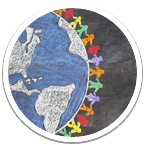References and additional information
Additional information
EIGE. 2018. European Institute for Gender Equality. Estimation of girls at risk of female genital mutilation in the European Union. Step-by-step guide 2nd Edition. Vilna, Liettua.
End FGM. European network. Female genital mutilation -webpage.
Essak, B., Sailo, E. & Illahe, K. 2013. Say no to FGM. Female genital mutilation. Brochure.
The Family Federation of Finland. Seksuaalioikeudet ja kotoutuminen. Työkalupakki – materiaalia eri kielillä. (Sexual rights and integration. Material in different languages.) Web page.
Female Genital Mutilation/Cutting: A Call for a Global Response. 2020. End FGM, Equality Now.
Female Genital Mutilation in the Refugee Context. Challenges and Recommended Actions. 2019. Plan International Deutschland e.V. (pdf 1,977kb)
Finnish League for Human Rights. 2019. Let’s protect girls from female genital mutilation. Brochure.
Johnsdotter, S. & Essén, B. (2016). Cultural change after migration: Circumcision of girls in Western migrant communities. Clinical Obstetrics & Gynaecology. 2016; Vol. 32, p.15-25.
Kandala, N-B, Ezejimofor, M.C., Uthman, O.A., & Komba, P. 2018. Secular trends in the prevalence of female genital mutilation/cutting among girls: a systematic analysis. BMJ. 2018; vol.3, iss.5.
Klemetti, R & Raussi-Lehto, E. 2018. Promote, prevent, influence : The action programme for the promotion of sexual and reproductive health in 2014-2020. National Institute for Health and Welfare. Discussion paper 14/2018. Helsinki 2018.
Koukkula, M., Keskimäki, I., Koponen, P., Mölsä, M. & Klemetti, R. 2016. Female genital mutilation/cutting among women of Somali and Kurdish origin in Finland. Birth. 2016;43:240‐246.
Koukkula, M. & Klemetti, R. 2019. Action plan for the prevention of female genital mutilation (FGM). Ministry of Social Affairs and Health publication 2019:7.
Korpilahti, U., Kettunen, H., Nuotio, E., Jokela, S., Nummi, V. & Lillsunde, P. (eds.) 2020. Non-Violent Childhoods : Action Plan for the Prevention of Violence against Children 2020–2025. Publications of the Ministry of Social Affairs and Health 2020:34.
Finnish Immigration Service. 2015. Female circumcision – you can get help -brochure. Available in 8 different languages.
Shabila, N. 2019. Geographical variation in the prevalence of female genital mutilation in the Kurdistan region of Iraq. Eastern Mediterranean Health Journal. Vol. 25 No. 9, 2019.
Ministry of Social Affairs and Health. 2012. Action Plan for the prevention of circumcision of girls and women 2012-2016 (FGM) (pdf 414 kt). Publications 2012:14. Helsinki: Ministry of Social Affairs and Health.
Ministry of Social Affairs and Health. 2017. Action plan for the Istanbul Convention for 2018–2021. Ministry of Social Affairs and Health 2017:18. STM.
Mohamed, A.H. & Latvala, J. 2020. Female Genital Mutilation (FGM). Awareness and perceptions of Somali men in the Helsinki region, Finland. Finnish League for Human Rights. Helsinki.
UNFPA-UNICEF. 2018. Joint Programme on Female Genital Mutilation. Accelerating Change: Annual Report 2018.
UNICEF 2020. Female genital mutilation (FGM). Data
Väkiparta, M. 2019. Young men against female genital mutilation/cutting in Somaliland: Discursively negotiating violence, gender norms and gender order. Helsinki University. Faculty of Arts. Doctoral Dissertation.
WHO. 2008. Eliminating female genital mutilation. An interagency statement – OHCHR, UNAIDS, UNDP, UNECA, UNESCO, UNFPA, UNHCR, UNICEF, UNIFEM, WHO. Geneva, Switzerland. (Available in Arabic, English, Japanese, Portuguese and French)
WHO. 2018. Care of girls and women living with female genital mutilation: a clinical handbook. Geneva.
WHO. 2020. Female Genital Mutilation. Key facts.
Master’s theses (Universities)
Koukkula, M. 2015. Female genital mutilation/cutting among women of Somali and Kurdish origin in Finland. Tampereen yliopisto. Terveystieteiden yksikkö, Kansanterveystiede. Pro gradu.
Niskala, Sirpa 2015. Vicious circle of silence – female circumcision tradition in immigrant men’s interviews. University of Tampere School of Health Sciences.
Matsuuke, Eeva 2011. Female genital mutilation (FGM) and its future among Somali women in Finland. University of Tampere Medical School. Lääketieteen yksikkö. International Health. Pro gradu.
Other theses and final year projects (Universities of Applied Sciences)
Kytöaho, H. & Rinne, J. 2018. Global Perspective on Deinfibulation. Laurea-ammattikorkeakoulu
Arra, Maaria ja Nyyssölä, Johanna 2012. Female circumcision in North and East Africa Interviews with experts regarding methods, effects and challenges of health promotion. Helsinki Metropolia University of Applied Sciences. Nursing and Health Care. Bachelor of Health Care.
Laukkanen, Nina ja Lunden, Niina 2013. Somali Nursing Students Interview; effects of female circumcision to the forbidding opinions and attitudes in country of origin in Somalia. Helsinki Metropolia University of Applied Sciences. Nursing and Health Care. Bachelor of Health Care.
Parekh, Seija 2010. Awareness and usage of the recommendations concerning female circumcision with regards to the health care sector. Diaconia University of Applied Sciences. Degree Programme in Nursing. Public Health Nurse.
References
Ministry of Social Affairs and Health 2012. Action Plan for the prevention of circumcision of girls and women 2012-2016 (FGM) (pdf 414 kt). Publications 2012:14. Helsinki: Ministry of Social Affairs and Health.
WHO 2014. Female genital mutilation.
WHO. 2020. Female Genital Mutilation. Key facts.




